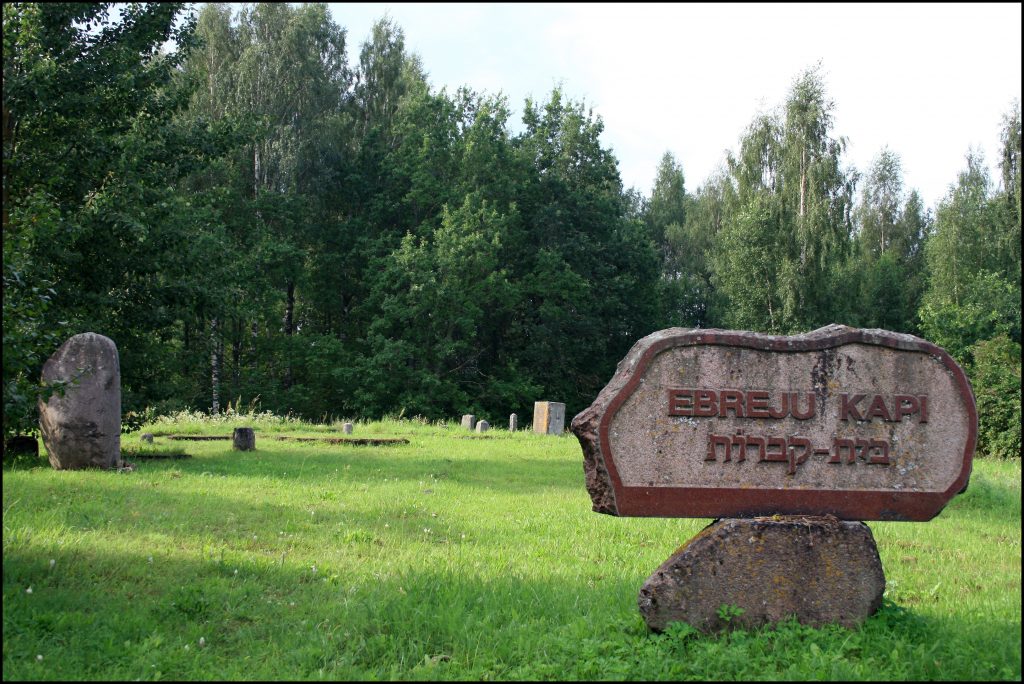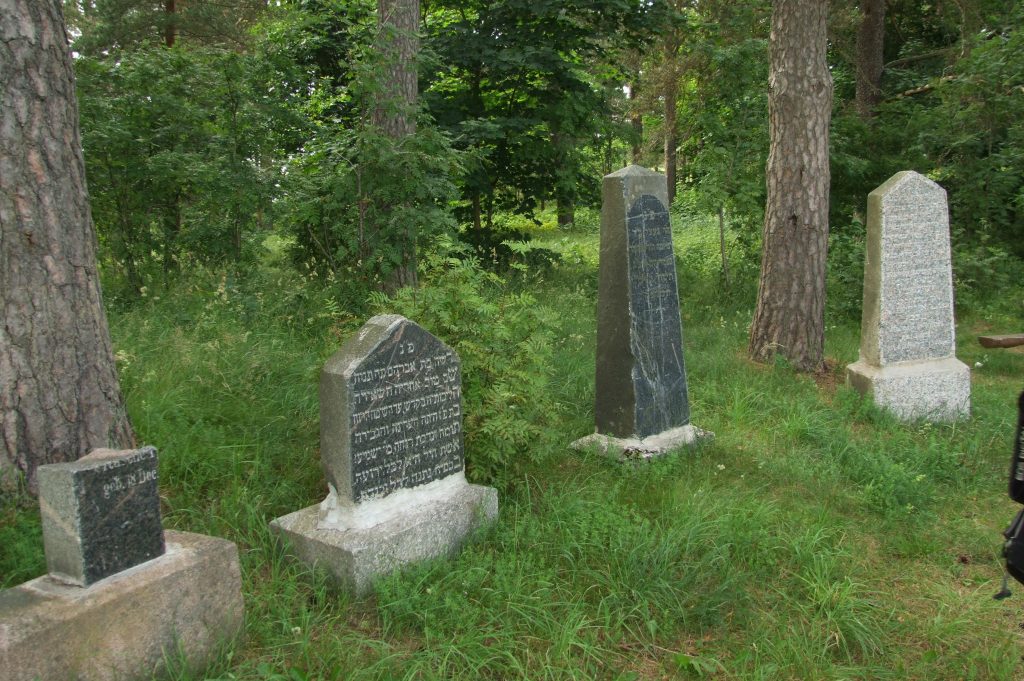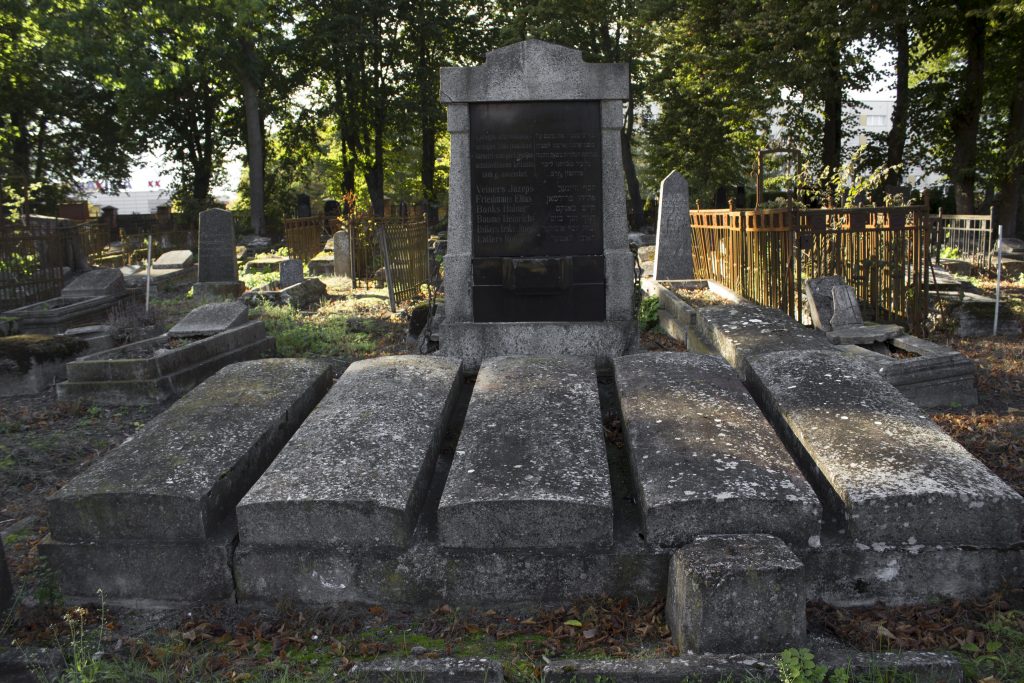The number of active Jewish communities in Latvia is much smaller since the Shoah. All information concerning them is likely to quickly prove obsolete, since demographic trends in the communities leave little doubt about their dying out in the near future.

The aliyah toward Israel is likewise becoming increasingly significant. Inquiries can be made at the offices of the Jewish community in Riga . Despite present circumstances, a trip to Latvia must above all include visiting cemeteries. The best way to find the remains of a Jewish cemetery is to solicit the aid of a local elderly person (financial compensation being the rule in the case of a visit). The main difficulty visitors encounter in finding ancestral graves is that the tombstones generally bear only the Hebrew name of the deceased (i.e. the first name and the name of the person’s father), without any indication of the family name. Although not exhaustive, following is a list of cemeteries and their state of preservation. For each city of the country, we give a brief description of its cemeteries.

Aizpute: Some hundred or so gravestones still remain, dating for the most part from the beginning of the nineteenth century.
Auce: There are some ten stone grave markers, located on a piece of land adjacent to a Christian cemetery.
Dagda: Approximately seventy gravestones remain.
Daugavpils: In the old cemetery of the Alte Vorstadt, only one broken gravestone remains (from the 1830s). The new cemetery has close to 200 tombs. The registers of the local Hevra Kasdisha, going back seventy years or so, are available for examination at the nearby community center.
Gostini: The cemetery, with 160 tombs, is located about three miles from the city, on the route to Madona.
Jaunjelgava (Friedrichstadt): The large cemetery possesses a number of stone tombs decorated with engraved motifs, including carved lions and birds.
Jekabpils (Jakobstadt): Situated close to the Duiha River, the cemetery is still in use by the remaining twenty families, although it is not in good condition.

Jelgava (Mitau): This cemetery, created in the sixteenth century, was almost entirely destroyed by the Nazis and later by the Soviets. Located at the corner of Zalites and Bauskas Streets, it now retains no more than thirty tombs.
Kraslava: This seventeenth-century cemetery is in an excellent state of preservation and has a hundred or so gravestones, some belonging to Russian soldiers of the Red Army.
Kuldiga (Goldigen): Located to the west of the city (Vecie kapi) between Leipajas and Parka streets, this cemetery has been transformed into a municipal park. It has a Jewish section (on the Parka side) with approximately 25 gravestones. Damaged gravestones have been transferred to the neighboring city of Skrunda. Note: With a few exceptions in the capital cities (and even there…), these exhumations have taken place without any respect for Jewish religious laws.
Liepaja (Libau): This cemetery, which is both Jewish and Christian, contains around 500 graves in relatively good condition. The funerary registers (up to 1941) are available for examination by request from the caretaker.
Piltene: This well-preserved cemetery dates from the seventeenth century.
Prejli: The cemetery has around twenty graves, overgrown with vegetation; it also includes a memorial to the victims of the Shoah.

Rezekne: Situated at the top of a hill in the suburbs of the city, this well-preserved cemetery contains some 300 graves.
Sabile: The small cemetery here is home to some twenty untended graves and is located at the end of an unmarked path.
Saldus (Frauenburg): The cemetery is located just at the exit of the city in an unmarked location of the forest. Sixty graves remain on a site that is completely unmaintained and unguarded.
Skaistkalne: Bordering the Christian cemetery, this cemetery has forty graves.
Subate: The town curate, who would bear contacting, is interested in preserving this site, which is approximately 200 years old.
Talsi: The cemetery is situated on the other side of the path leading to the Christian cemetery; it is overgrown with vegetation and has been vandalized.
Tukums: The cemetery is in good condition and contains around 200 graves, including a significant mausoleum (belonging to the last rabbi of the town).
Valdemarpils (Sasmachen): This cemetery is situated to the east of the city between Dzirnavu and Ezera Streets at the top of a wooded hill above Lake Sasmaka. Destroyed by the Soviets in the 1960s, almost nothing of this cemetery remains. A number of gravestones were used for paving the walkways.
Varakljany: This cemetery has 250 graves in good condition, the oldest dating from 1820.
There are others less important cemeteries in Ventspils (Windau), Viljany, and Viski (on a small island in a lake).
The concentration camps situated in the territory of the former GDR (Sachsenhausen, Buchenwald) have been transformed into memorials. The transformation was a way for the Communist regime to tell its own version of the story of Nazi resistance. The victims of the camp are gathered together under the rubric “antifascists”, and emphasis os on the role of deported Communists in the underground Resistance and that of the Red Army on the liberation of the camps. Since Germany’s reunification in 1990, Western revisionist historiography has been introduced, although not without difficulty, as attested by the numerous manifestations of anti-Semitism and xenophobia in this part of the country.
Sachsenhausen
Sachsenhausen concentration camp was opened in 1933 to imprison Hitler’s German opponents: Communists, Social Democrats, and union leaders. Erich Honecker, the future leader of the GDR from 1971 to 1989, was detained here for ten years. Half of the 200,000 detainees who passed through this camp from all over Europe died of starvation, sickness, and abuse.
Ravensbrück
Ravensbrück was the largest of the camps reserved for women. More than 130,000 Resistance fighters, Jews, and Gypsies were imprisoned here, often with their children, in horrifying conditions. The minister Simone Veil was detained here before being transferred to Auschwitz. Transformed after 1945 into barracks for Soviet occupation troops, this camp was refurbished in 1992 and turned into a museum that, notably, contains commemorative prison cells where each country can honor its own prisoners.
Neuengamme
Of the 106,000 detainees in Neuengamme, 55,000 perished. SS doctors performed criminal medical experiments in this camp, primarily on Jewish children. A monument in memory of the victims and an archive collection can be visited.
Buchenwald
Opened in 1937, Buchenwald camp was intended for Hitler’s political opponents. After the outbreak of the war, it “welcomed” Nazi adversaries from occupied countries, among them such eminent French personalities as Léon Blum and Marcel Dassault (constituting more than a third of the 250,000 prisoners). Buchenwald as liberated after a revolt organized by the clandestine Resistance within the camp itself. On its former location a monument was erected for all the victims of Nazi terror.
Bergen-Belsen
More than 50,000 Sovier prisoners of war died in Bergen-Belsen. Beginning in 1944, Bergen-Belsen served as an overflow camp for prisoners of other camps situated further east who were brought here by SS executioners fleeing the Russian advance. As many as 50,000 prisoners, among them the young Anne Frank, did not survive this forced march or died after arrival at the camp.
Dachau
Dachau was the first large concentration camp opened by the Nazis upon their rise to power in 1933. Their registers record 200,000 people entering the camp and 30,000 deaths, a tally that far from corresponds to the true number of victims. many of whom were brought here and executed without any kind of trial. A museum, archive, two churches, and a synagogue have been erected on the land once occupied by the camp.